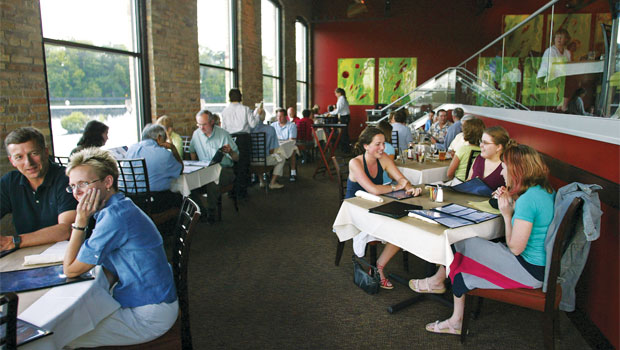Adam Christopher was working as a waiter more than a decade ago when the restaurant’s owners openly wished they could run their own computer-based reservation system.
He took it as a challenge.
As a side project, Christopher, who advanced into other positions with the business, wrote and tested software codes for a reservation-management program. Two years ago, he launched Restaurant Connect.
Today, the Austin, Texas-based enterprise gives restaurants the option of having their own electronic-reservation services.
“What restaurateurs appreciate is if you can help them build their brand,” Christopher says. “The idea is to connect the guest to the restaurant—on the website, through Facebook, by phone—to build their relationship, and not inject a third party into it.”
It’s that kind of thinking—plus a lower cost—that restaurant owners appreciate.
“People use our website to make a reservation,” says Scott Roekle, director of operations for the Supple Group, which operates eight full-service restaurants—both company-owned and franchised—in Wisconsin.
Controlling the reservation process gives a restaurant the opportunity to communicate with a potential customer, including when a desired reservation time is unavailable.
“If you go through big, online-reservation companies, they tell the guest the time he wants [for a reservation] is not available and encourage him to go elsewhere,” Roekle says. “We want the chance to say, ‘Give us a call. Maybe we can work something out.’”
Restaurant Connect, which has an upfront charge and monthly fee, also offers applications that handle table management, including wait lists.
Most of these companies maintain the restaurants’ information using Internet-based “cloud” technology. Multiple computers, tablets, or other devices at a restaurant can access the data at no additional cost.
That means real-time reservation and table-management information can be viewed at the host desk, in the general manager’s office, and anywhere with Internet access.
“That is the way the industry is moving,” notes Dave Matthews, the National Restaurant Association’s vice president of innovation and membership advancement. “Software applications based in the cloud will tie in with all kinds of other programs.”
For instance, a cloud-based guest database can tell anyone connected to the reservation system about a customer’s table preferences, allergies, and much more. The technology also can send the guest a text or email reminder of the reservation.
All this helps improve the guest experience—the primary justification for any restaurant’s use of technology.
[pagebreak]
“You need to make it easy for diners to visit,” says Arlene Spiegel, a New York restaurant consultant.
By gathering and storing information, she notes, operators can “know the kind of meal the guest likes, a favorite server, or a favorite table.” In a world where indifference is the norm, “people like to be known and treated as special.”
Companies offering restaurant-centric reservation systems take care of all the support and upgrades. They also furnish the necessary software programs—on a CD or hosted on the Web—to link the eateries’ computers with the providers’ systems that maintain the data.
“All you need is a computer and an Internet connection,” says Mike Edmeyer, vice president of sales at ReServe Interactive, Livermore, California.
Many ReServe customers are large companies, such as Gaylord Resorts, where guests can book tables through individual restaurants or a call center.
Similarly, ESP Systems’ ProHost table-management system and its RSVip reservation program allow online reservations to be taken via a website or social media, 24 hours a day.
“You can also write and maintain notes about each customer’s preferences when they make a reservation or after each visit,” says Drew Palmer, co-founder of ESP, which charges clients an upfront cost and an annual maintenance fee.
ProHost integrates with several point-of-sales systems, and when a customer pays the check, data appears indicating the guest is ready to leave.
Quick and nimble solutions:
Reservation-application provider Quickcue originated from a desire to send mobile messages to wait-listed guests, alerting them when their tables are ready. However, by the time the first version was released last spring, it also had a reservation component.
Quickcue has also simplified its cost structure and charges by the number of guests in a reservation. Rather than charging $1 or $2 each, like some online entities, Quickcue takes a penny for each customer in a reservation, plus a nickel to send a confirmation.
The company is developing additional applications, to be rolled out this year, and Jason Alexander, director of product for the Chattanooga, Tennessee-based company, says, “The biggest will be full-table management.”
Among the restaurants using Quickcue’s iPad-based reservation system is Alleia, an upscale Chattanooga Italian restaurant, where general manager David Mease praises the solution: “It’s very intuitive, easy to work with, and provides plenty of options to store guest data and historical information. It’s much better than the old (table) maps and reservation books.”










